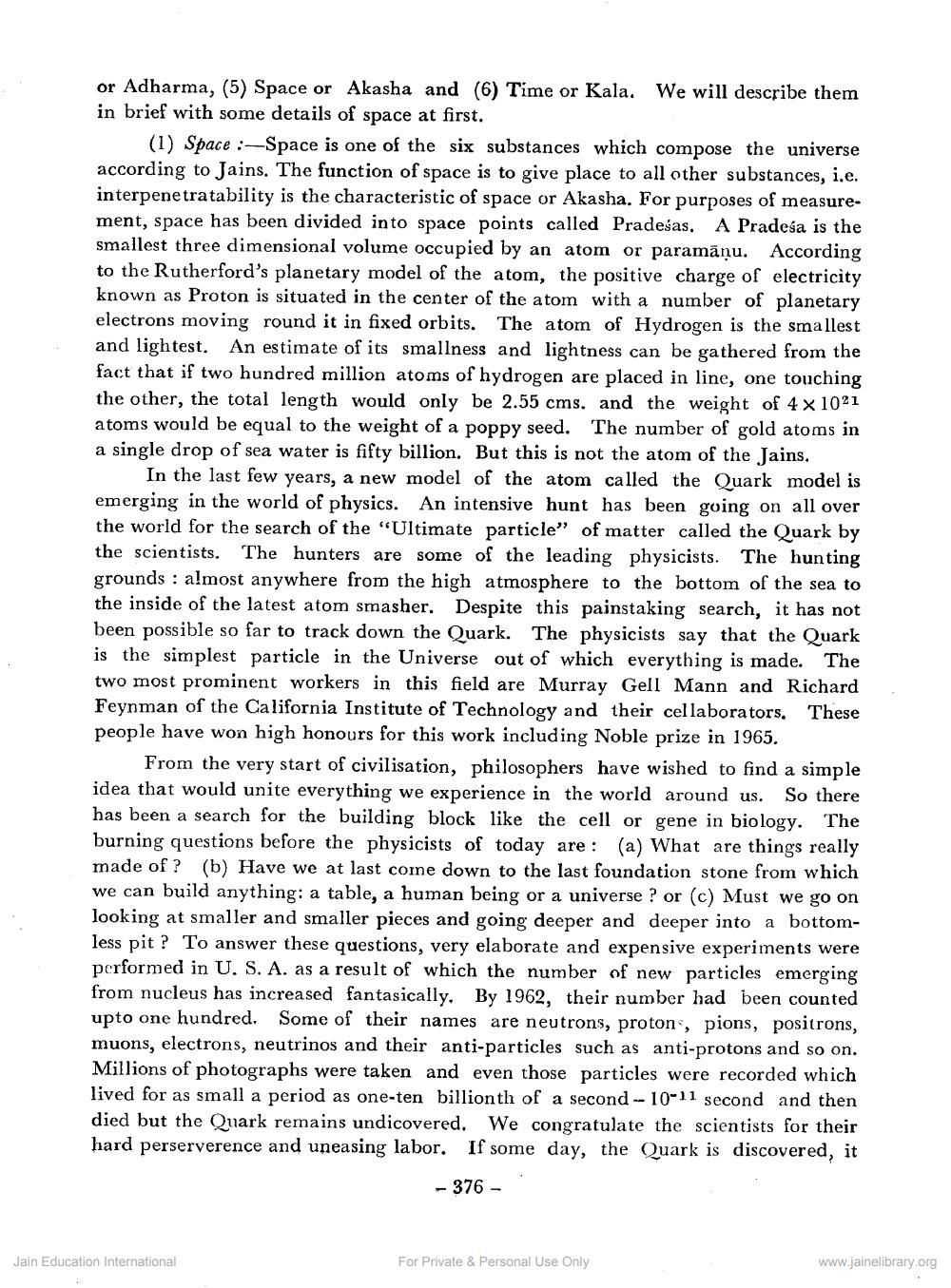Book Title: Space Time and The Universe Author(s): G R Jain Publisher: Z_Kailashchandra_Shastri_Abhinandan_Granth_012048.pdf View full book textPage 2
________________ or Adharma, (5) Space or Akasha and (6) Time or Kala. We will describe them in brief with some details of space at first. (1) Space Space is one of the six substances which compose the universe according to Jains. The function of space is to give place to all other substances, i.e. interpenetratability is the characteristic of space or Akasha. For purposes of measurement, space has been divided into space points called Pradeśas. A Pradeśa is the smallest three dimensional volume occupied by an atom or paramäņu. According to the Rutherford's planetary model of the atom, the positive charge of electricity known as Proton is situated in the center of the atom with a number of planetary electrons moving round it in fixed orbits. The atom of Hydrogen is the smallest and lightest. An estimate of its smallness and lightness can be gathered from the fact that if two hundred million atoms of hydrogen are placed in line, one touching the other, the total length would only be 2.55 cms. and the weight of 4 x 1021 atoms would be equal to the weight of a poppy seed. The number of gold atoms in a single drop of sea water is fifty billion. But this is not the atom of the Jains. In the last few years, a new model of the atom called the Quark model is emerging in the world of physics. An intensive hunt has been going on all over the world for the search of the "Ultimate particle” of matter called the Quark by the scientists. The hunters are some of the leading physicists. The hunting grounds : almost anywhere from the high atmosphere to the bottom of the sea to the inside of the latest atom smasher. Despite this painstaking search, it has not been possible so far to track down the Quark. The physicists say that the Quark is the simplest particle in the Universe out of which everything is made. The two most prominent workers in this field are Murray Gell Mann and Richard Feynman of the California Institute of Technology and their cellaborators. These people have won high honours for this work including Noble prize in 1965. From the very start of civilisation, philosophers have wished to find a simple idea that would unite everything we experience in the world around us. So there has been a search for the building block like the cell or gene in biology. The burning questions before the physicists of today are: (a) What are things really made of ? (b) Have we at last come down to the last foundation stone from which we can build anything: a table, a human being or a universe ? or (c) Must we go on looking at smaller and smaller pieces and going deeper and deeper into a bottomless pit ? To answer these questions, very elaborate and expensive experiments were performed in U. S. A. as a result of which the number of new particles emerging from nucleus has increased fantasically. By 1962, their number had been counted upto one hundred. Some of their names are neutrons, protons, pions, positrons, muons, electrons, neutrinos and their anti-particles such as anti-protons and so on. Millions of photographs were taken and even those particles were recorded which lived for as small a period as one-ten billionth of a second-- 10-11 second and then died but the Quark remains undicovered. We congratulate the scientists for their hard perserverence and uneasing labor. If some day, the Quark is discovered, it - 376 - Jain Education International For Private & Personal Use Only www.jainelibrary.orgPage Navigation
1 2 3 4 5 6 7 8 9 10 11 12 13
